
We know, we know—swatching isn’t the most exciting part of knitting. It’s tempting to skip it and jump straight into your project, but here’s the thing: swatching saves you from heartbreak later. No one wants to spend weeks (or months) knitting a sweater only to find out it doesn’t fit.
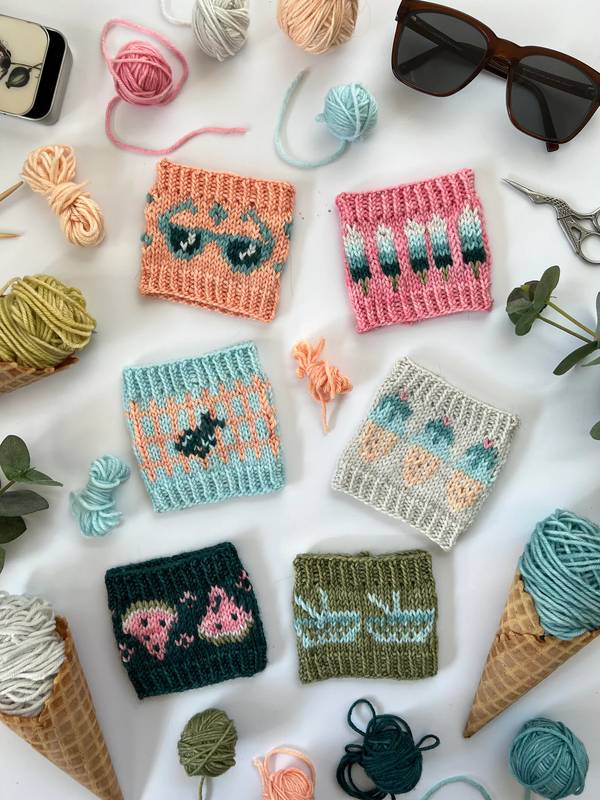
© Pacific Knit Co
Swatching isn’t just about getting the right stitch count—it’s about understanding how your yarn behaves, how your stitches will look once blocked, and how your fabric will feel when worn.
A good swatch helps you avoid surprises and gives you the confidence that your project will turn out just right, no matter the technique—lace, colorwork, cables, or simple stockinette.
In this newsletter, we’re breaking down everything you need to know about swatching—from how to do it correctly to troubleshooting gauge issues.
Let’s make swatching less of a chore and more of a tool that works for you!
What Is a Swatch, and Why Does It Matter?
A swatch is a small sample of knitted fabric that helps you check gauge, test stitch patterns, and see how your yarn behaves.
It might seem like an extra step, but skipping it can lead to sweaters that don’t fit, fabric that’s too stiff or too loose, or colorwork that puckers in all the wrong places.
Swatching is your chance to get to know your yarn before committing to an entire project.
If you’re knitting something like a scarf, swatching might not be as crucial. But for anything fitted—like sweaters, socks, or even hats—it’s the key to making sure your finished project looks and feels the way you want it to.

How to Swatch Correctly
A quick little square isn’t always enough. To get an accurate gauge measurement, your swatch should be large enough to measure at least 4 inches across without counting the edge stitches (which can distort your numbers).
Here’s how to do it right:
- Cast on more stitches than the pattern’s gauge suggests. If the pattern says the gauge is 18 stitches over 4 inches, cast on around 24–26 stitches to give yourself room to measure accurately.
- Knit in the stitch pattern used in the gauge measurement. If the pattern gives gauge in stockinette, knit in stockinette. If it’s a textured or lace fabric, swatch in that.
- To garter border or not to garter border? Some knitters add a garter or seed stitch border to keep the swatch from curling. Others argue that this distorts the gauge because purl stitches use more yarn than knit stitches. The best way to know if a border affects your gauge is to compare it to the final gauge of your finished garment. Try both ways and see what works best for you.Bind off loosely and block the swatch. Gauge can change after blocking, so don’t skip this step.
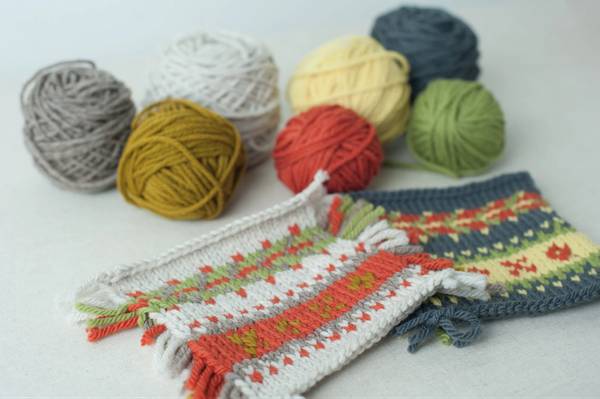
Swatching in the Round vs. Flat
Not all projects are worked flat, which means your gauge might be different when knitting in the round.
This is especially true for knitters whose purl tension differs from their knit tension.
To swatch in the round without knitting an entire tube, try the speed swatch method:
- Cast on enough stitches for about a 4-inch swatch.
- Knit across the row, then instead of turning your work, slide the stitches back to the right-hand needle, loosely strand the working yarn across the back, and knit across again.
- Repeat until the swatch is large enough, then bind off and block.

Some knitters prefer to cut the floats in the back before blocking so the swatch lays completely flat, but if your floats are loose and your swatch is large enough, you won’t need to cut them.
This way, you can unravel the swatch and use the yarn in your project if you find yourself playing yarn chicken later.

Swatching for Different Fabrics
A gauge swatch isn’t just about stitch count—it’s also about how the fabric feels.
A swatch helps you decide if the fabric is sturdy enough for a tote bag, drapey enough for a shawl, or structured enough for a sweater.
- Need more drape? Try going up a needle size. This is great for shawls and lightweight garments.
- Want a firmer fabric? Go down a needle size. This helps with projects like tote bags or structured sweaters.
- Like the drape but want more coverage? Consider adding a strand of mohair or another lightweight fiber for extra body without losing softness.
Think of swatching as a first date with your fabric—you’re figuring out if this is something you want to commit to before investing time and effort into a full project.
How to Swatch for Different Stitch Patterns
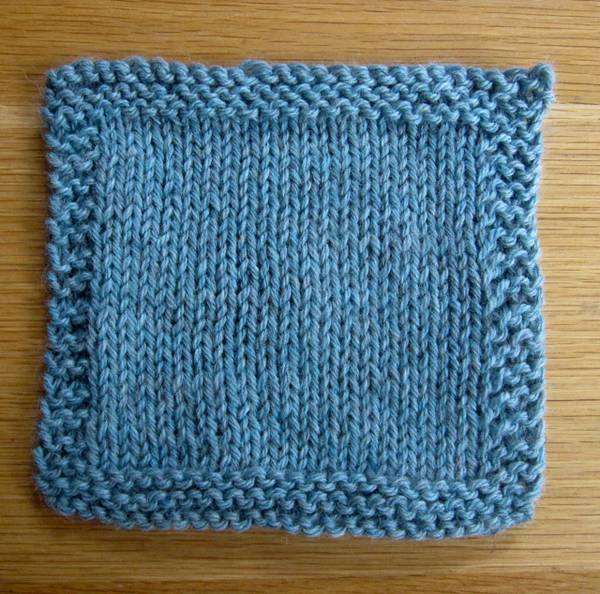
Stockinette Swatch
Cast on enough stitches for at least a 4-inch wide section and knit in stockinette stitch (knit on the right side, purl on the wrong side).
If swatching for a project knit in the round, use the method described above to mimic your in-the-round tension.
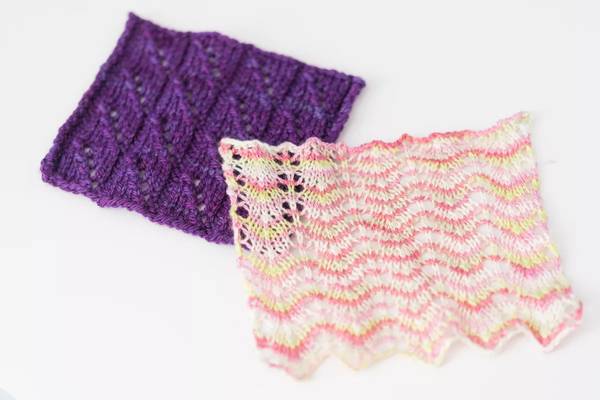
Lace Swatch
Swatch in the lace pattern provided in the pattern, and always block before measuring.
Lace stitches open up significantly after blocking.
If you’re substituting yarn, swatching will help you decide if your chosen yarn holds lace definition well.
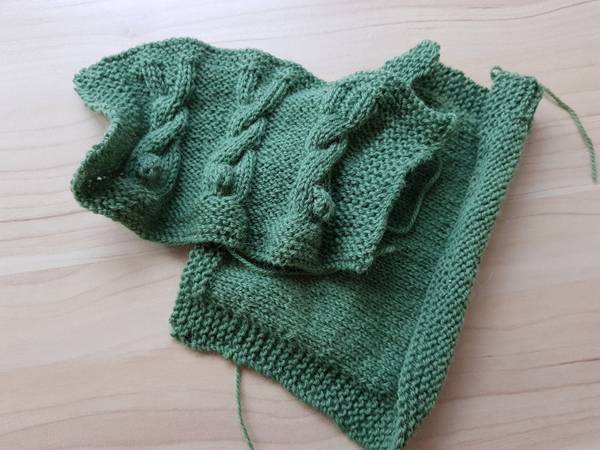
Cable Swatch
Cables pull fabric inward, making it denser than stockinette.
If your pattern includes cables, always swatch in pattern to get an accurate gauge.
Expect the width to shrink compared to stockinette.

Colorwork Swatch
Work the colorwork section of your pattern in the round or flat according to your pattern, and block before measuring.
Colorwork stitches can be tighter than plain knitting, and blocking helps even out the fabric.
Troubleshooting Gauge Issues
- Fewer stitches per inch than required = your fabric is too loose, and your project will turn out larger than expected.
- More stitches per inch than required = your fabric is too tight, and your project will be smaller than expected.
If your gauge is off, you have a few options:
- Change your needles. Going up a needle size will create a looser fabric with fewer stitches per inch, while going down a size will create a tighter fabric with more stitches per inch.
- Try a different yarn. Some yarns behave differently than others, even in the same weight category. Swatching helps you see if your chosen yarn matches the gauge given in the pattern.
- Adjust the pattern. If you’re slightly off gauge, you can do some math and modify stitch counts accordingly. For example, if your gauge is off by one stitch per inch, you can multiply that difference across the total stitch count to determine whether you need to size up or down.
A swatch isn’t just about matching a number—it’s about making sure your finished project turns out the way you want.
Taking the time to swatch means fewer surprises and more knits you’ll love wearing!
Swatching might not be the most exciting part of knitting, but it’s the step that saves future-you from frustration.
A little time spent upfront means no surprises when your sweater actually fits, your lacework blocks beautifully, and your colorwork doesn’t turn into an accidental compression sleeve.
So grab some yarn, cast on a swatch, and see what your stitches are telling you.
Testing out a new fiber, checking gauge, or getting to know your fabric before committing—it’s all time well spent. (And if you’ve ever skipped it and regretted it later—we’ve all been there.)
Happy knitting – and happy swatching!
